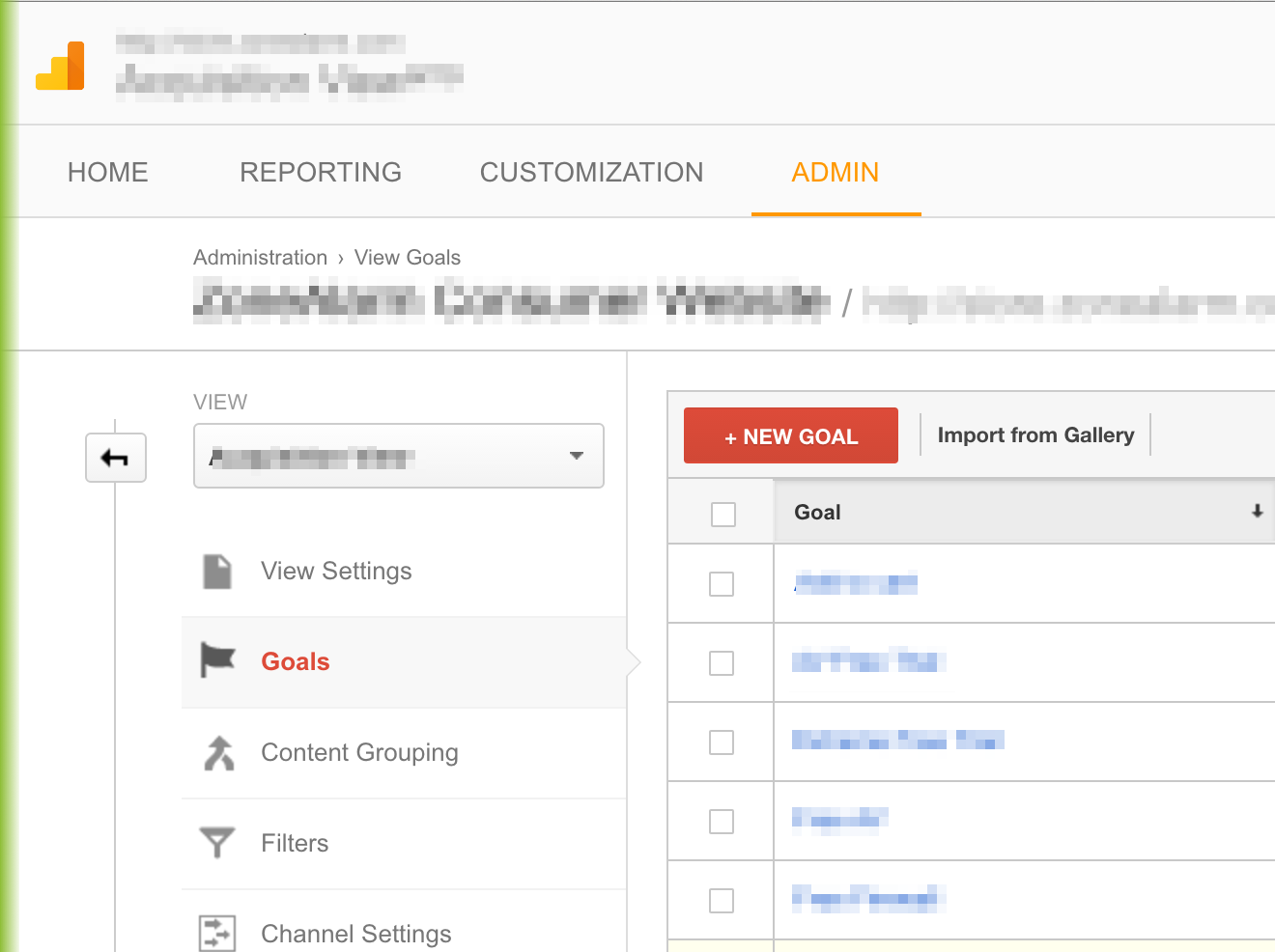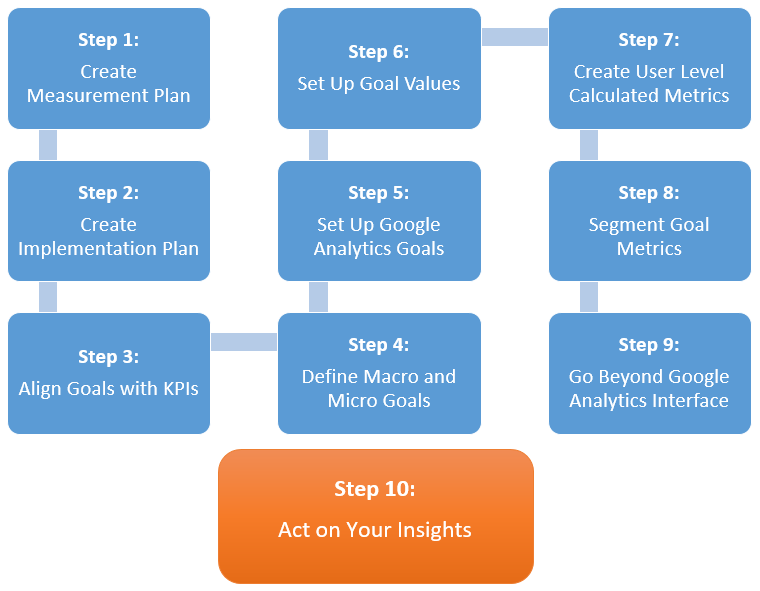Discover the Limitations of Google Analytics Goals: Introducing the Data Kind That Remain Untrackable
As organizations significantly count on data-driven decision-making, understanding the constraints of devices like Google Analytics becomes extremely important. While Google Analytics Goals deal beneficial understandings into individual interactions, there exist information kinds that elude tracking, posturing obstacles to a comprehensive understanding of user actions. These untrackable information types question concerning the precision and completeness of the analytics information that organizations heavily trust for their digital approaches. Curious to reveal the covert dead spots in your information analysis process?
Insufficient Individual Trip Tracking
Insufficient user journey tracking within Google Analytics can impede the capacity to properly analyze individual habits. When the individual journey is not completely tracked, there are spaces in the information that avoid a comprehensive understanding of just how users communicate with a web site. This lack of insight can lead to missed out on possibilities for optimization and renovations to the user experience.
One usual issue with incomplete user journey monitoring is the inability to see the full path that users take previously finishing a goal or leaving the website. Without this information, it is challenging to determine where customers might be coming across obstacles or friction factors that stop them from transforming. In addition, insufficient tracking can cover the influence of specific marketing initiatives or web site adjustments on customer actions.
To resolve this restriction, it is critical to establish proper monitoring systems within Google Analytics to capture the whole individual journey. This may entail establishing event tracking, objective funnels, or using devices like Google Tag Manager to make sure that no essential communications go unrecorded. By getting a comprehensive sight of the individual journey, site owners can make more informed choices to boost individual interaction and drive conversions.
Acknowledgment Difficulties
Browsing with attribution obstacles in Google Analytics needs a complete understanding of exactly how various touchpoints contribute to the overall conversion process. Attribution difficulties develop from the intricacy of modern customer trips, where users communicate with several networks prior to converting.
One usual acknowledgment challenge is the trouble in connecting conversions to the correct resource, specifically in instances where users communicate with multiple channels before converting. This can cause inaccuracies in figuring out which advertising initiatives are driving the most conversions. Furthermore, cross-device tracking poses another attribution challenge, as users typically change between devices throughout their trip, making it challenging to track their interactions seamlessly. Marketing professionals need to carefully analyze and analyze acknowledgment data to make enlightened choices and optimize their advertising and marketing strategies effectively.
Offline Conversions
Provided the challenges related to attributing conversions properly in online networks, the dimension of offline conversions presents a significant opportunity for marketing experts seeking an extra comprehensive understanding of their customers' trip. Offline conversions refer to activities that clients take in the physical world, such as making purchases in brick-and-mortar shops or over the phone, attending occasions, or involving with published materials - what data is google analytics goals unable to track. These conversions are critical for companies that operate both online and offline, as they provide important understandings into the performance of advertising and marketing projects across numerous touchpoints
Tracking offline conversions typically postured useful reference a substantial difficulty for marketers, as it was testing to connect these actions back to particular on the internet interactions properly. However, with improvements in modern technology, such as the assimilation of CRM systems, unique identifiers, and voucher codes, organizations can now bridge the space between online and offline information to obtain a more alternative view of consumer behavior. By successfully measuring offline conversions, online marketers can optimize their techniques, allocate resources extra successfully, and ultimately boost the general customer experience.
Cross-Device Tracking
Cross-device tracking plays a crucial duty in recognizing the interconnected nature of customers' digital communications across numerous gadgets. In today's omnichannel world, where individuals perfectly switch between tablets, smartphones, and desktop computers, tracking their habits throughout these devices is important for marketing professionals to acquire an extensive view of their consumer journey.

Moreover, privacy issues and policies such as GDPR and CCPA have further difficult cross-device monitoring. With users requiring more control over their data and raised limitations on monitoring innovations, marketing professionals need to find innovative and privacy-compliant methods to link customer interactions across devices.
Dynamic Material Involvement
Comprehending customer involvement with vibrant content is critical in maximizing digital advertising approaches for improved target market interaction. Dynamic web content refers to internet site elements that alter based on individual behavior, preferences, or other elements, supplying a personalized experience. However, tracking individual communications with dynamic content poses obstacles for standard Read Full Report analytics devices like Google Analytics.
While Google Analytics can track basic communications like clicks and page sights, it may battle to catch more nuanced engagements within vibrant material. what data is google analytics goals unable to track. Metrics such as time spent on certain dynamic elements, float activities, or communications within pop-ups are frequently not easily quantifiable utilizing typical monitoring methods. This constraint hinders marketing professionals' capability to fully comprehend just how users are involving with vibrant content and tailor their techniques appropriately

Conclusion
To conclude, Google Analytics goals have restrictions in tracking insufficient customer journeys, attributing conversions precisely, recording offline conversions, tracking cross-device interactions, and determining dynamic material involvement. These restrictions highlight the value of exploring additional monitoring methods and tools to gain an extra thorough understanding of individual actions and conversions beyond what Google Analytics can give.
While Google Analytics Goals deal useful insights into user interactions, there exist information kinds that avoid monitoring, positioning difficulties to an extensive understanding of individual behavior.Incomplete individual journey monitoring within Google Analytics can impede you could try these out the capability to properly examine user behavior. When the user trip is not totally tracked, there are voids in the data that avoid a comprehensive understanding of just how users communicate with a web site.One common problem with incomplete individual trip tracking is the failure to see the full path that individuals take in the past finishing an objective or leaving the website. By gaining a thorough sight of the individual journey, web site proprietors can make more informed choices to improve customer engagement and drive conversions.